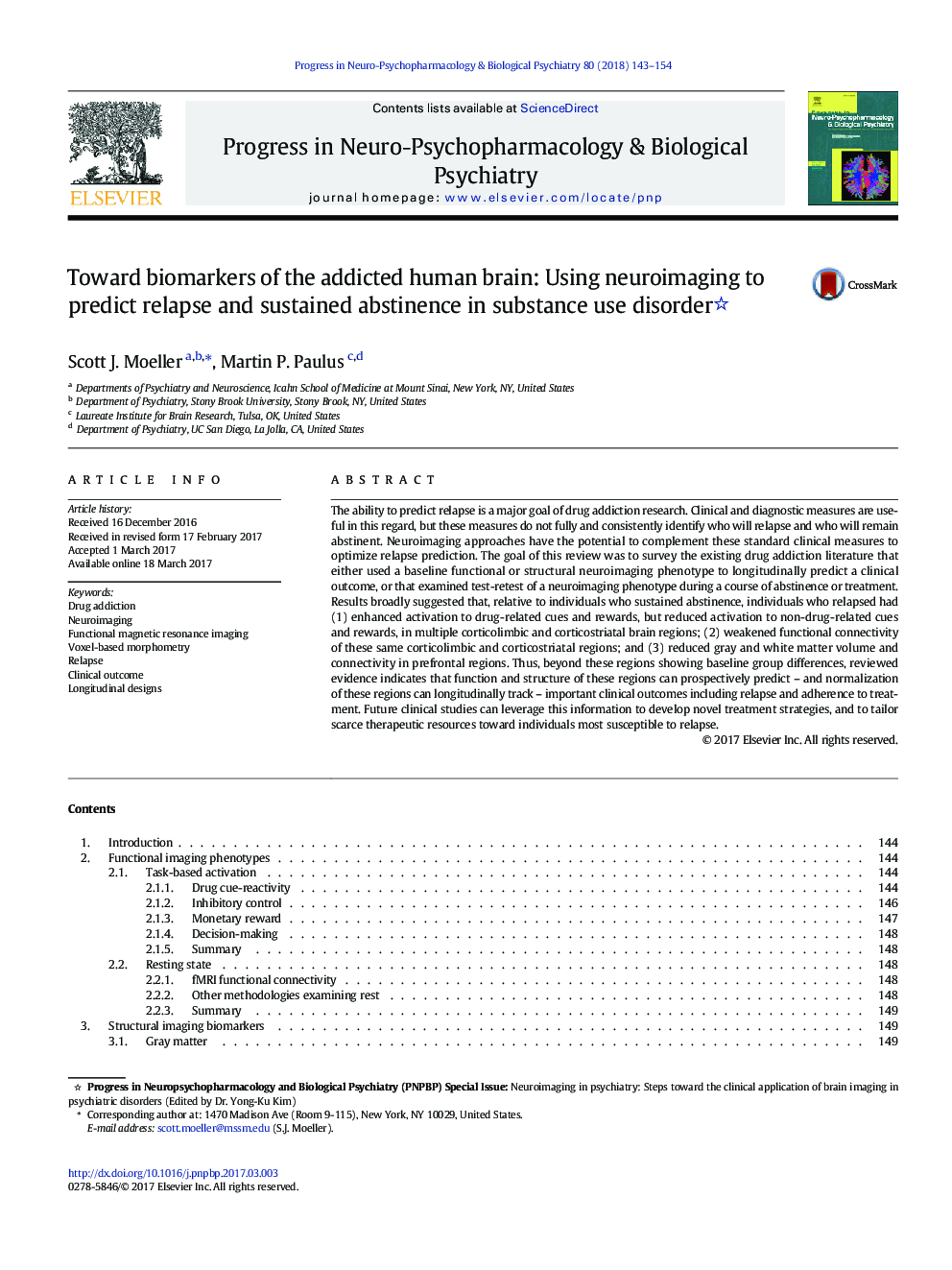| کد مقاله | کد نشریه | سال انتشار | مقاله انگلیسی | نسخه تمام متن |
|---|---|---|---|---|
| 5557901 | 1561015 | 2018 | 12 صفحه PDF | دانلود رایگان |
- We review neuroimaging studies examining longitudinal prediction of relapse.
- We discuss MRI, fMRI, EEG, and PET studies meeting defined inclusion criteria.
- We reveal predictive effects in prefrontal and subcortical brain regions.
- These imaging phenotypes may provide biomarkers that have future clinical utility.
The ability to predict relapse is a major goal of drug addiction research. Clinical and diagnostic measures are useful in this regard, but these measures do not fully and consistently identify who will relapse and who will remain abstinent. Neuroimaging approaches have the potential to complement these standard clinical measures to optimize relapse prediction. The goal of this review was to survey the existing drug addiction literature that either used a baseline functional or structural neuroimaging phenotype to longitudinally predict a clinical outcome, or that examined test-retest of a neuroimaging phenotype during a course of abstinence or treatment. Results broadly suggested that, relative to individuals who sustained abstinence, individuals who relapsed had (1) enhanced activation to drug-related cues and rewards, but reduced activation to non-drug-related cues and rewards, in multiple corticolimbic and corticostriatal brain regions; (2) weakened functional connectivity of these same corticolimbic and corticostriatal regions; and (3) reduced gray and white matter volume and connectivity in prefrontal regions. Thus, beyond these regions showing baseline group differences, reviewed evidence indicates that function and structure of these regions can prospectively predict - and normalization of these regions can longitudinally track - important clinical outcomes including relapse and adherence to treatment. Future clinical studies can leverage this information to develop novel treatment strategies, and to tailor scarce therapeutic resources toward individuals most susceptible to relapse.
Journal: Progress in Neuro-Psychopharmacology and Biological Psychiatry - Volume 80, Part B, 3 January 2018, Pages 143-154
